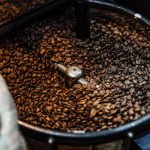1. The Origins of Colombian Coffee
Colombian coffee has a story that begins high in the Andes Mountains, where rich volcanic soil, steady rainfall, and perfect temperatures create one of the best environments in the world for growing coffee. These natural conditions, combined with generations of farming knowledge and cultural pride, have helped shape Colombia into one of the most respected coffee-producing countries globally.
The Perfect Blend of Nature
Colombia’s unique geography plays a big role in its coffee success. Nestled near the equator, the country enjoys a steady climate year-round. Most coffee is grown between 1,200 and 1,800 meters above sea level — an ideal altitude for Arabica beans. Here’s a quick look at how Colombias environment supports coffee farming:
| Factor | Impact on Coffee |
|---|---|
| Altitude (1,200–1,800m) | Enhances flavor complexity and acidity |
| Volcanic Soil | Rich in nutrients essential for healthy plants |
| Tropical Climate | Consistent rainfall and sunlight promote year-round growth |
| Geographic Diversity | Allows for multiple harvest seasons across regions |
A Tradition Passed Down Through Generations
Coffee was first introduced to Colombia in the early 18th century by Jesuit priests. Since then, it has become deeply rooted in Colombian culture. Small family-owned farms make up the majority of coffee producers, many of whom follow traditional farming methods passed down over centuries.
The Role of the Cafeteros
The hardworking farmers, known as “cafeteros,” are at the heart of Colombia’s coffee heritage. Many live and work on steep hillsides, handpicking ripe coffee cherries to ensure quality. Their dedication ensures that each cup of Colombian coffee reflects care, craftsmanship, and authenticity.
Fun Fact:
The National Federation of Coffee Growers of Colombia (FNC) was established in 1927 to support local growers. Its also responsible for creating Juan Valdez — the iconic figure representing Colombian coffee around the world.
From its geographic advantages to its time-honored traditions, Colombias origins in coffee production set the stage for some of the finest brews youll ever taste.
2. From Bean to Brew: The Coffee Growing Process
Colombia’s coffee isn’t just famous for its smooth flavor—it’s a result of a careful and passionate process that starts long before your morning cup. In this section, we’ll walk through the journey of the coffee bean, from planting to brewing, and highlight the hard work and dedication of Colombian farmers who make it all possible.
The Beginning: Planting the Seeds
Coffee in Colombia starts in rich volcanic soil, high up in the Andes Mountains. Farmers plant Arabica coffee seeds, which thrive in Colombia’s mild climate and shaded hillsides. These seeds are usually grown in nurseries before being transplanted to the fields once they’re strong enough.
Growing Conditions Matter
| Factor | Description |
|---|---|
| Altitude | Between 3,000 and 6,000 feet above sea level for ideal flavor development |
| Climate | Mild temperatures with regular rainfall support year-round harvests |
| Soil | Nutrient-rich volcanic soil provides essential minerals for healthy growth |
The Harvest: Picking by Hand
One thing that sets Colombian coffee apart is the way its harvested. Coffee cherries don’t ripen all at once, so farmers return to each tree multiple times during harvest season. They carefully pick only the ripe red cherries by hand—a method known as selective picking. This ensures better quality beans make it into your brew.
The Process: From Cherry to Green Bean
Once picked, the cherries go through processing—usually washed (or “wet”) processing, which is common in Colombia. Heres how it works:
Coffee Processing Steps
| Step | Description |
|---|---|
| Pulping | The outer skin of the cherry is removed to expose the beans inside |
| Fermentation | The beans are soaked to remove sticky mucilage through natural fermentation |
| Washing & Drying | The beans are washed clean and dried under the sun or using mechanical dryers |
| Milling | The dry parchment layer is removed to reveal green coffee beans ready for export or roasting |
Sustainability and Farmer Dedication
A big part of what makes Colombian coffee special is the commitment of its farmers—not just to quality, but also to sustainability. Many small-scale growers use eco-friendly farming methods like composting and shade-grown cultivation. Organizations like the Colombian Coffee Growers Federation help support these efforts through education and fair trade practices.
A Labor of Love
Coffee farming in Colombia is often a family tradition passed down through generations. Each cup you enjoy represents hours of careful work—from early mornings on steep hillsides to long afternoons sorting beans under the sun. That dedication shows in every sip.
This journey from bean to brew reveals not only how much effort goes into making great coffee, but also how deeply connected Colombians are to their land and their craft.

3. The Role of Colombian Coffee Culture
Coffee is more than just a beverage in Colombia—its a way of life. For many Colombians, coffee represents family, history, and national identity. From the moment you step into a Colombian home, youre likely to be offered a warm cup of “tinto,” a small black coffee that symbolizes hospitality and connection.
Everyday Life and Family Traditions
In Colombian households, coffee plays a central role in daily routines. It’s common for families to gather over coffee during breakfast or afternoon breaks. Children often grow up watching their grandparents hand-pick coffee cherries or help with drying beans under the sun. These experiences are passed down through generations, making coffee an integral part of family life.
Common Coffee Moments in Colombian Homes
| Occasion | Coffee Tradition |
|---|---|
| Morning Wake-Up | Brewing fresh tinto for the family |
| Afternoon Break | Sharing sweet bread and coffee with neighbors |
| Family Gatherings | Serving coffee as a symbol of unity and warmth |
National Pride and Cultural Identity
Coffee farming is deeply tied to Colombian identity. Many regions, especially the Coffee Triangle (Eje Cafetero), host annual festivals celebrating the harvest season with parades, music, and traditional dances. These events not only highlight the hard work of farmers but also show how proud Colombians are of their rich coffee heritage.
The Iconic Figure: Juan Valdez
No discussion about Colombian coffee culture is complete without mentioning Juan Valdez. Created in the 1950s by the National Federation of Coffee Growers of Colombia, Juan Valdez is more than just a marketing figure—he’s a national symbol representing the dedication and authenticity of Colombian coffee farmers. With his mule Conchita by his side, Juan Valdez became an international ambassador for 100% Colombian coffee.
What Juan Valdez Represents
- Authenticity: Promotes pure, single-origin Colombian coffee
- Pride: Embodies the hardworking spirit of local farmers
- Recognition: Helps distinguish Colombian coffee on the global stage
This deep-rooted culture around coffee not only boosts Colombia’s economy but also strengthens community bonds and national pride.
4. Flavor Profiles and Regional Distinctions
Colombian coffee is celebrated around the world for its vibrant flavors and exceptional quality. But did you know that the taste of Colombian coffee can vary widely depending on where its grown? From the lush mountains of Huila to the high altitudes of Nariño and the traditional farms in Antioquia, each region brings its own unique twist to your morning cup. Lets take a closer look at what makes these regions stand out in the specialty coffee scene.
Huila: Bright and Fruity
Located in southern Colombia, Huila is one of the countrys most famous coffee-producing regions. Thanks to its rich volcanic soil and ideal climate, beans from Huila often have a bright acidity and complex fruity notes. Coffee lovers often describe Huila coffees as juicy, with hints of tropical fruits like mango or citrus, and a clean, sweet finish.
Nariño: High Elevation Elegance
Nariño sits at some of the highest elevations where coffee is grown in Colombia—up to 2,300 meters (7,500 feet) above sea level. This extreme altitude slows the maturation of coffee cherries, allowing more time for sugars to develop. As a result, Nariño coffees tend to have a delicate body with floral aromas, crisp acidity, and flavor notes like red berries or honey.
Antioquia: Classic and Balanced
Antioquia is one of Colombia’s oldest coffee regions and offers a more traditional flavor profile. Coffees from this area typically have a medium body, mild acidity, and chocolatey or nutty undertones. Its a great choice for those who enjoy a smooth, well-rounded brew thats easy to drink any time of day.
Flavor Comparison by Region
| Region | Altitude Range | Flavor Notes | Acidity Level | Body |
|---|---|---|---|---|
| Huila | 1,200–1,800 meters | Tropical fruits, citrus, caramel | Bright | Medium to full |
| Nariño | 1,800–2,300 meters | Red berries, floral, honey | Crisp & high | Light to medium |
| Antioquia | 1,000–2,000 meters | Chocolate, nuts, mild fruit | Mild | Medium |
Why It Matters in Specialty Coffee
The unique characteristics from each region help roasters and baristas create distinct flavor profiles that appeal to different palates. Whether youre into fruity pour-overs or chocolatey espresso shots, understanding regional distinctions can help you find your perfect Colombian brew.
No matter your preference, exploring Colombian coffee by region adds an exciting layer of discovery to every sip. So next time you’re choosing beans at your local café or online shop, take note of where they come from—you might just find your new favorite cup.
5. Bringing Colombian Coffee to the American Cup
Colombian coffee has carved out a special place in the hearts—and mugs—of coffee lovers across the United States. Known for its smooth flavor, balanced acidity, and rich aroma, Colombian beans are a favorite among American roasters, cafés, and everyday coffee drinkers. But what makes it such a perfect match for U.S. coffee culture?
Why Americans Love Colombian Coffee
Colombian coffee appeals to a wide range of American tastes because it strikes a balance between boldness and smoothness. Its not too bitter, making it ideal for both black coffee purists and those who enjoy cream and sugar. Its versatility also works well with popular brewing methods in the U.S., from drip machines to pour-overs.
Main Flavor Profile of Colombian Coffee
| Flavor Note | Description |
|---|---|
| Bright Acidity | A lively, crisp taste that adds freshness |
| Medium Body | Smooth texture thats not too heavy or light |
| Nutty & Fruity Notes | Hints of citrus, berries, or almonds often appear |
Popular U.S. Roasters Featuring Colombian Coffee
Many well-known American roasters consistently offer Colombian beans due to their quality and reliability. Whether youre shopping online or visiting your neighborhood café, chances are youll spot a Colombian roast on the menu.
| Roaster | Notable Colombian Offering |
|---|---|
| Stumptown Coffee Roasters | Colombia El Jordan – known for its citrus and caramel notes |
| Blue Bottle Coffee | Colombian Single Origin – often used in pour-over offerings |
| Intelligentsia Coffee | Colombia La Perla de Manizales – featuring fruit-forward flavors |
How Colombian Coffee Fits Modern U.S. Trends
The rise of specialty coffee culture in America has only increased the demand for high-quality single-origin beans like those from Colombia. Consumers today want transparency about where their coffee comes from, how its grown, and who grows it—all things that Colombia’s well-organized coffee cooperatives can provide.
Trendy Brewing Methods That Highlight Colombian Coffee:
- Pourover: Showcases the clarity of flavor in lighter roasts.
- Aeropress: Brings out fruity and nutty notes with more body.
- Cold Brew: Smooths out acidity while keeping sweetness intact.
From its mountainside farms to your morning cup, Colombian coffee continues to be a cornerstone of American coffee culture—loved for its consistency, complexity, and connection to tradition.


